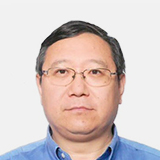November 2019 | Volume 21 No. 1
Of Mice, Men and Pigs
Since embryonic stem cell research began in the 1970s, scientists have typically worked with ‘blastocysts’ – clusters of several dozen embryonic cells that have just started on the path to development. But there have been limitations with this approach, not least because it was only possible to derive embryonic stem cells from the blastocysts of rodents and humans, not other mammalian species, which restricted stem cell research and its applications. Stem cells from pigs, for instance, could be particularly useful for biomedical research because they share many genetic, anatomical and physiological features with humans.
The conventional wisdom held that it was difficult to derive embryonic stem cells from other animal species because of the differences between species. But Professor Pengtao Liu of the Li Ka Shing Faculty of Medicine’s School of Biomedical Sciences and Stem Cell and Regenerative Medicine Consortium was not convinced. About a decade ago, he set out to prove his case working with his research team at the Wellcome Sanger Institute (previously the Wellcome Trust Sanger Institute) in Cambridge.
“Our argument was that perhaps we needed to re-think this problem, and I had an idea. What if we tried to derive stem cells earlier in the development process, for example from mouse embryos of only four or eight cells? These early embryos are to some extent similar to blank pieces of paper – there is not much written on them so there is less diversity among species,” he said.
With that idea, he and his team developed technology that can capture and derive stem cells from the very early embryos of different species.
Several firsts
The first animal they worked with was the laboratory mouse. In 2017 they reported in Nature that they had captured early stem cells, which they called Expanded Potential Stem Cells (EPSCs). This was to distinguish them from the two existing blastocyst stem cell types called embryonic stem cells, which are derived from fertilised eggs, and induced pluripotent stem cells, which come from skin and other cells and are re-programmed to an embryonic-like state.
The significance of their finding was two-fold. First, as predicted, Professor Liu and his team were able to show that their technology worked for other mammals. In June 2019, they reported in Nature Cell Biology that they had derived EPSCs from humans and, for the first time, from pigs.
“Scientists have been trying for many years to derive pig embryonic stem cells without success because they used the standard blastocyst embryo approach. Our porcine EPSCs will allow us to do sophisticated genetic modification of the pig genome,” he said.
This has major implications for research in several fields. Scientists will now be able to edit pig genes, which is expected to lead to applications in regenerative medicine, organ transplantation, biotechnology, and animal health and food production.

The research team in the School of Biomedical Sciences – (from left) Dr Martin Cheung, Professor William Yeung and Professor Pengtao Liu.
Totipotent features go beyond previous stem cells
“Our stem cells can greatly accelerate the process because we can make multiple modifications in a short period of time that was previously challenging. There are so many things that could be done in the coming years rather than decades,” he said.
The second important impact of their research is that their EPSCs have ‘totipotency’ features, meaning they have the potential to produce all embryonic and extra-embryonic cell lines, including those of the placenta, called trophoblasts, and the yolk sac. “This is different from standard embryonic stem cells which primarily produce only embryonic cell lineages,” he said. Being able to study trophoblasts means researchers may be able to get to the root of pregnancy complications such as miscarriages and preeclampsia, which affects about six to eight per cent of all pregnancies.
Professor Liu has worked in close collaboration with the Wellcome Sanger Institute and the Friedrich-Loeffler-Institut in Germany. Moving forward, he said that since Hong Kong lacks large animal facilities, they will also be collaborating with centres outside Hong Kong for further research on pigs and other large animals. The team is also trying to derive EPSCs from more mammalian species and will investigate the potential of the technology in species conservation.
“EPSCs have been called transformative because we can make many more modifications more quickly than before and do things that were previously impossible. We believe they have huge potential for future studies of fundamental human biology and translational medicine,” Professor Liu said.
EPSCs [Expanded Potential Stem Cells] have been called transformative because we can make many more modifications more quickly than before and do things that were previously impossible.

PROFESSOR PENGTAO LIU

